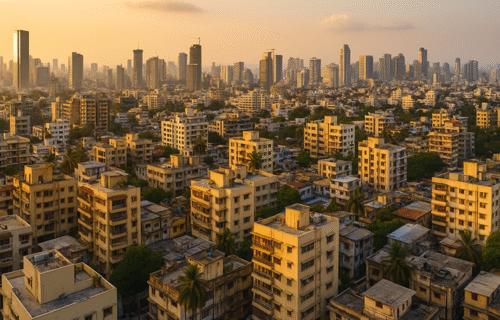India’s cities are expanding faster than ever, yet owning a home is becoming increasingly out of reach for many. In 2025, the country’s housing market has grown into one of the most active in Asia, but the boom has also exposed a widening gap between investment-driven growth and genuine affordability.
Across major cities such as Mumbai, Delhi, Bengaluru and Pune, residential sales continue to climb, particularly in the higher-end segment. Developers have shifted focus toward larger apartments and luxury projects, drawn by better margins and steady buyer interest. Meanwhile, homes intended for middle-income families are becoming harder to find, both because of rising costs and limited new supply.
For most households, the pressure lies in the mismatch between earnings and property prices. Even though borrowing costs have stabilized, everyday expenses — from food and fuel to transport — have eroded disposable income. Many would-be buyers are now looking beyond the city centres to suburban and semi-urban areas, where housing remains relatively affordable but infrastructure still lags behind.
At the same time, smaller cities once considered peripheral are turning into new growth hubs. Places like Indore, Coimbatore and Lucknow are attracting developers and buyers alike, supported by road expansions, metro systems and better public services. These new markets offer a sense of balance between affordability, accessibility and quality of life — something larger metros struggle to provide.
Yet, India’s housing system remains hindered by slow policy reform and uneven implementation. Laws intended to modernize rental markets and boost affordable housing have advanced only in select regions. The shortage of well-priced urban homes is compounded by complex land rules, weak legal protections for tenants and long delays in approving construction projects.
Government programmes designed to expand affordable and rental housing are helping, but they remain small compared with the scale of demand. Experts warn that without coordinated reforms, the country’s fast-growing cities risk deepening inequality between those who can buy and those who cannot.
Still, change is emerging. Demand for environmentally friendly and energy-efficient homes is rising, particularly among younger urban buyers. Developers are gradually incorporating sustainable materials, shared spaces and better designs to appeal to a new generation of professionals.
India’s housing challenge, then, is less about building more and more about building smart — ensuring that growth reaches beyond investors to those who need it most. The years ahead will test whether India can turn its property boom into a foundation for inclusive urban living rather than a symbol of widening economic divide.
